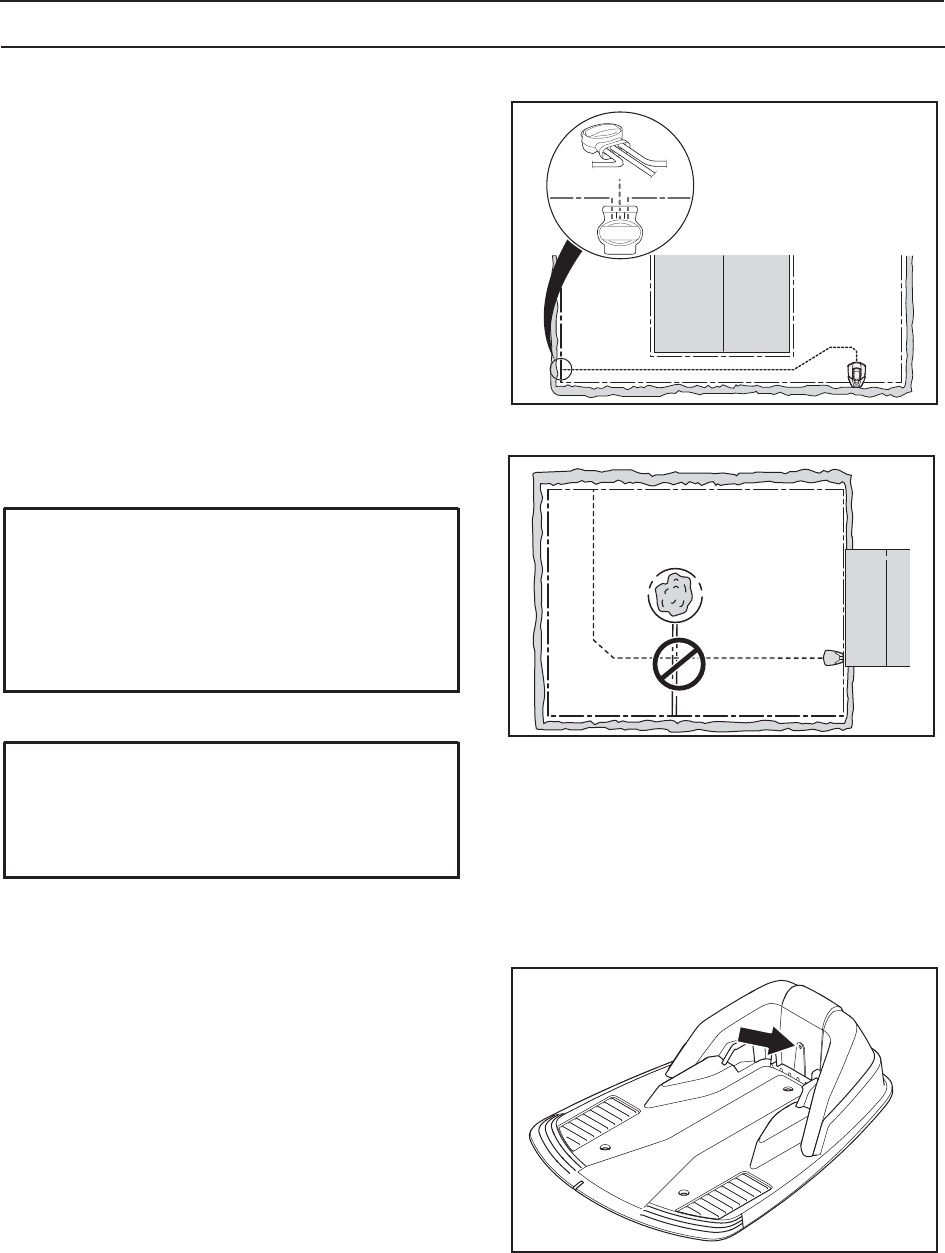
English - 31
3. INSTALLATION
6. Connect the guide wire to the boundary wire with
the help of a solderless coupler:
Insert the boundary wire in each of the holes in
the coupler. Insert the guide wire in the centre
hole in the coupler. Check that the wires are fully
inserted into the coupler so that the ends are
visible through the transparent area on the other
side of the coupler.
Use pliers to completely compress the button on
the coupler.
It does not matter which holes are used to
connect each wire.
7. Staple down/bury the connector in the lawn.
3.7 Checking the installation
Check the loop signal by inspecting the indicator
lamp on the charging station.
• Steady green light = good signals.
• Flashing blue light = interruption in the boundary
wire, no signal.
• Flashing yellow light = interruption in the guide
wire, no guide signal.
• Flashing red light = interruption in the charging
station's antenna plate, no remote signal
available. The fault should be rectified by an
authorized dealer.
• Steady blue light = weak signal. This may depend
on the boundary wire being over 250 m in length
or that the wire is damaged. If the mower still
works, this is not a problem.
• Steady red light = fault in a circuit board in the
charging station. The fault should be rectified by
an authorized dealer.
See 9.2 Indicator lamp in the charging station on
page 62 if the lamp does not indicate a solid green
light.
IMPORTANT INFORMATION
The function of the guide wire varies
depending on how the working area appears.
It is therefore recommended to test the
installation with the help of the function Test
IN (2-3-1), see 6.4 Installation (2).
IMPORTANT INFORMATION
The guide wire may not cross the boundary
wire, for instance a boundary wire that is laid
out to an island.


















